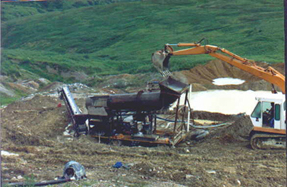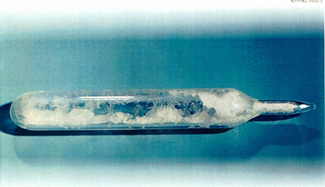Fuel For Nuclear Energy
Just like coal, we can harness the energy of nuclear fission in a power plant. Instead of heating water by burning coal, the nuclear fission reactions produce the energy needed to heat water, boil it, and produce steam. The steam then turns a turbine, just like in a coal-burning power plant.
Uranium 238 (U-238) and uranium 235 (U-235) are the most common isotopes used as fuel to power a nuclear power plant. Before the fuel is used, it has to undergo a few processing steps. Click each image to learn about these steps.







